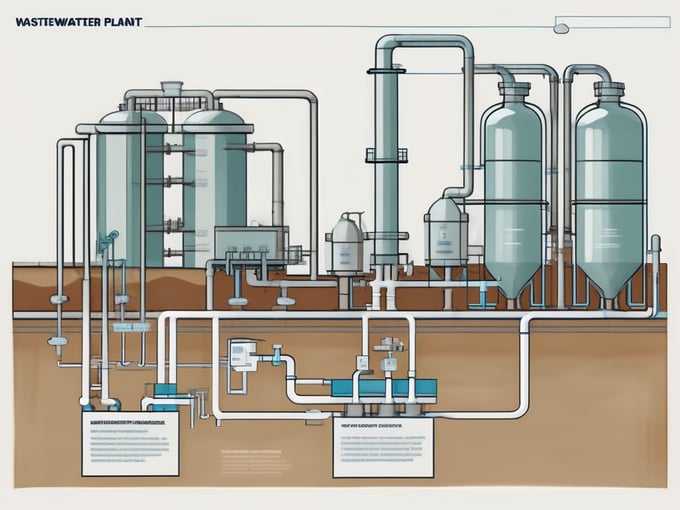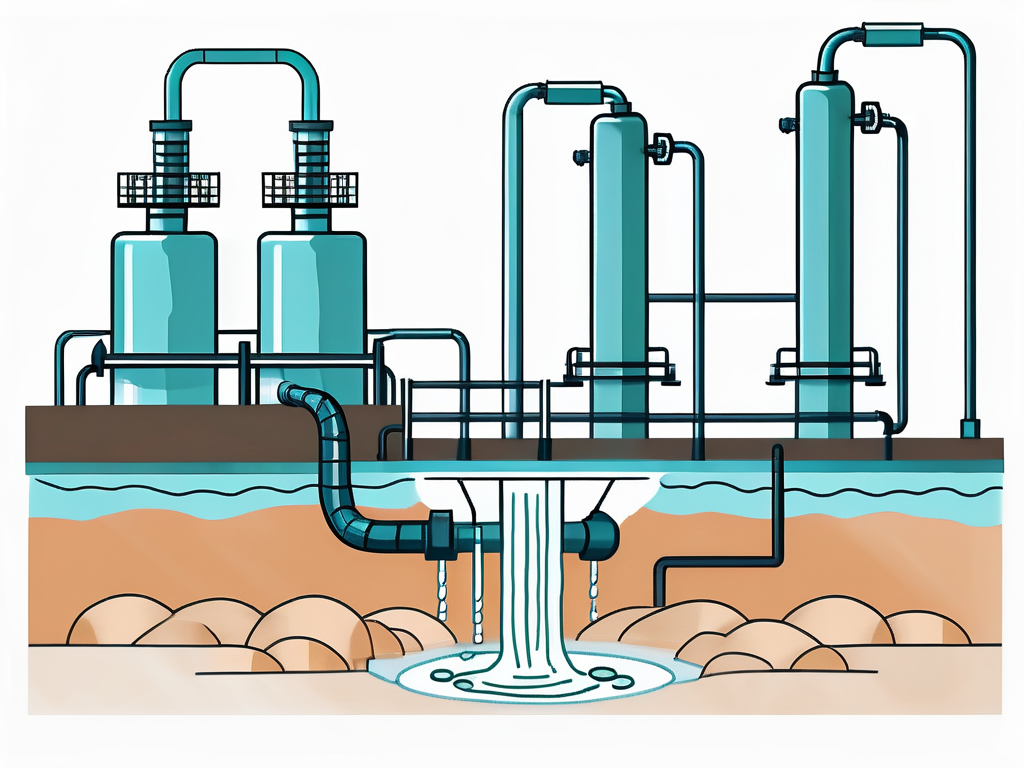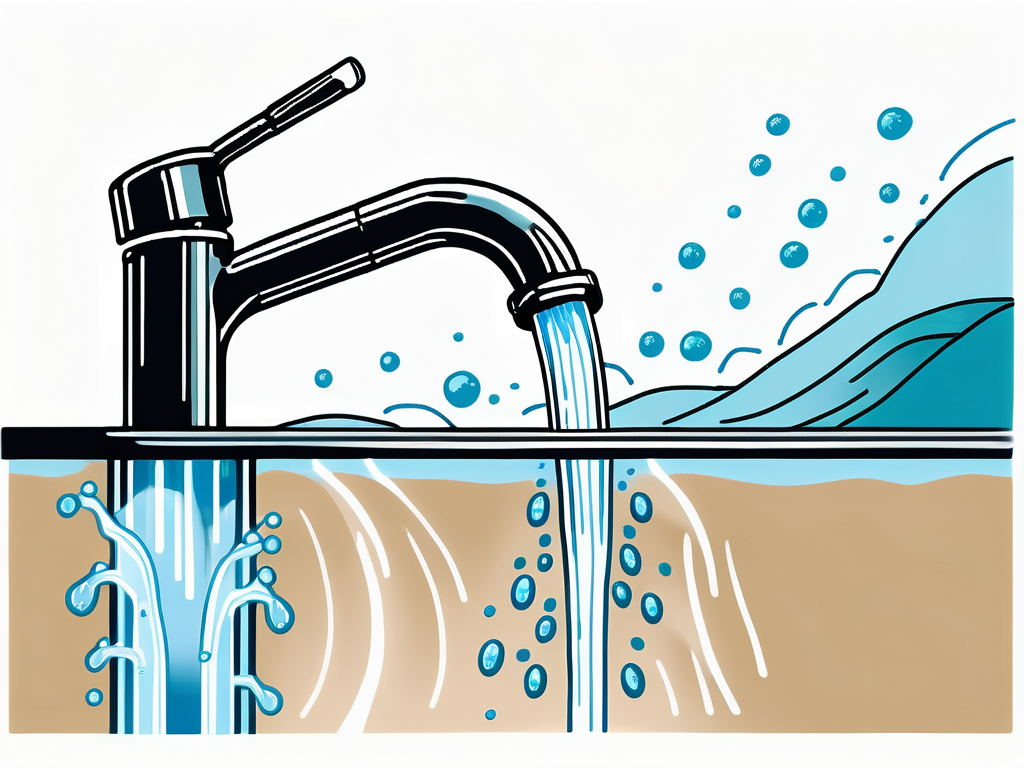
Effluent Guidelines: Wastewater Treatment Explained
Wastewater treatment is a critical process that ensures the safety and sustainability of our water resources. This comprehensive glossary entry will delve into the intricate details of effluent guidelines, providing a thorough understanding of wastewater treatment. We will explore the various stages of treatment, the types of pollutants removed, the different treatment technologies, and the regulations governing this process.
Effluent, in the context of wastewater treatment, refers to the treated water that is discharged from a treatment plant into a natural water body. The guidelines that govern the quality of this discharged water are known as effluent guidelines. These guidelines are crucial in maintaining the health of our water bodies and ensuring the safety of the water we consume.
Stages of Wastewater Treatment
The wastewater treatment process is typically divided into three main stages: primary, secondary, and tertiary treatment. Each stage is designed to remove different types of pollutants and progressively improve the quality of the water.
Primary treatment involves the removal of large, solid materials from the wastewater. This is typically achieved through screening and sedimentation processes. Secondary treatment, on the other hand, targets dissolved and suspended biological matter. This stage often involves biological processes where microorganisms consume the organic pollutants. Finally, tertiary treatment, also known as advanced treatment, targets the removal of nutrients such as nitrogen and phosphorus and any remaining suspended solids.
Primary Treatment
The primary treatment stage is designed to remove large, solid materials from the wastewater. This is achieved through screening and sedimentation processes. Screening involves passing the wastewater through screens to catch and remove large debris. Sedimentation, on the other hand, involves allowing the wastewater to settle in large tanks, where the heavier solid particles sink to the bottom and are removed.
This stage of treatment is crucial in protecting the equipment and processes used in the subsequent stages of treatment. By removing large, solid materials, primary treatment prevents damage and blockages that could disrupt the treatment process.
Secondary Treatment
The secondary treatment stage targets dissolved and suspended biological matter in the wastewater. This is often achieved through biological processes where microorganisms consume the organic pollutants. These microorganisms are then separated from the water, resulting in significantly cleaner effluent.
This stage of treatment is crucial in reducing the biological oxygen demand (BOD) of the wastewater. BOD is a measure of the amount of oxygen required by microorganisms to decompose the organic matter in the water. By reducing the BOD, secondary treatment helps to prevent oxygen depletion in the receiving water body, which could otherwise lead to the death of aquatic life.
Tertiary Treatment
Tertiary treatment, also known as advanced treatment, targets the removal of nutrients such as nitrogen and phosphorus and any remaining suspended solids. This stage of treatment often involves chemical and physical processes such as filtration, disinfection, and nutrient removal.
Nutrient removal is particularly important as excessive levels of nutrients in water bodies can lead to eutrophication, a process where excessive nutrients cause a dense growth of plant life, leading to the death of animal life from lack of oxygen. By removing these nutrients, tertiary treatment helps to prevent this environmental issue.
Types of Pollutants Removed
Wastewater treatment is designed to remove a wide range of pollutants from the water. These pollutants can be broadly categorized into physical, chemical, and biological pollutants. Physical pollutants include large, solid materials and suspended solids. Chemical pollutants include nutrients such as nitrogen and phosphorus, heavy metals, and organic chemicals. Biological pollutants include bacteria, viruses, and other microorganisms.
The removal of these pollutants is crucial in ensuring the safety and sustainability of our water resources. Each type of pollutant poses different risks to human health and the environment, and therefore, their removal is governed by different effluent guidelines.
Physical Pollutants
Physical pollutants in wastewater include large, solid materials and suspended solids. These pollutants are typically removed during the primary treatment stage through screening and sedimentation processes. The removal of these pollutants is crucial in protecting the equipment and processes used in the subsequent stages of treatment.
Physical pollutants can also pose risks to the environment. For example, suspended solids can cloud water bodies, blocking sunlight and disrupting photosynthesis in aquatic plants. This can lead to oxygen depletion and the death of aquatic life.
Chemical Pollutants
Chemical pollutants in wastewater include nutrients such as nitrogen and phosphorus, heavy metals, and organic chemicals. These pollutants are typically removed during the secondary and tertiary stages of treatment through biological, chemical, and physical processes.
Chemical pollutants can pose significant risks to human health and the environment. For example, heavy metals can accumulate in the food chain, leading to health risks for humans and wildlife. Nutrients such as nitrogen and phosphorus can lead to eutrophication, a process where excessive nutrients cause a dense growth of plant life, leading to the death of animal life from lack of oxygen.
Biological Pollutants
Biological pollutants in wastewater include bacteria, viruses, and other microorganisms. These pollutants are typically removed during the secondary and tertiary stages of treatment through biological processes and disinfection.
Biological pollutants can pose significant risks to human health. For example, bacteria and viruses can cause diseases such as cholera, typhoid, and hepatitis. Therefore, the removal of these pollutants is crucial in ensuring the safety of the water we consume.
Wastewater Treatment Technologies
There are a wide range of technologies available for wastewater treatment, each designed to remove different types of pollutants. These technologies can be broadly categorized into physical, chemical, and biological treatment technologies. Physical treatment technologies include screening and sedimentation processes. Chemical treatment technologies include coagulation, flocculation, and disinfection processes. Biological treatment technologies include activated sludge and trickling filter processes.
The choice of treatment technology depends on the characteristics of the wastewater and the effluent guidelines that need to be met. For example, if the wastewater contains high levels of nutrients, a treatment process that includes nutrient removal would be required. Similarly, if the wastewater contains harmful bacteria or viruses, a treatment process that includes disinfection would be necessary.
Physical Treatment Technologies
Physical treatment technologies for wastewater include screening and sedimentation processes. Screening involves passing the wastewater through screens to catch and remove large debris. Sedimentation involves allowing the wastewater to settle in large tanks, where the heavier solid particles sink to the bottom and are removed.
These physical treatment technologies are typically used in the primary treatment stage. They are crucial in protecting the equipment and processes used in the subsequent stages of treatment. By removing large, solid materials, these technologies prevent damage and blockages that could disrupt the treatment process.
Chemical Treatment Technologies
Chemical treatment technologies for wastewater include coagulation, flocculation, and disinfection processes. Coagulation and flocculation involve the addition of chemicals to the wastewater to promote the aggregation of suspended solids into larger particles that can be easily removed. Disinfection involves the use of chemicals or other methods to kill or inactivate harmful microorganisms.
These chemical treatment technologies are typically used in the tertiary treatment stage. They are crucial in ensuring the safety of the water we consume. By removing harmful microorganisms and other chemical pollutants, these technologies help to meet the effluent guidelines and protect human health and the environment.
Biological Treatment Technologies
Biological treatment technologies for wastewater include activated sludge and trickling filter processes. Activated sludge involves the use of aeration and a biological floc composed of bacteria and protozoa to remove organic pollutants. Trickling filter involves the use of a bed of porous material covered with biofilm to remove organic pollutants.
These biological treatment technologies are typically used in the secondary treatment stage. They are crucial in reducing the biological oxygen demand (BOD) of the wastewater. By reducing the BOD, these technologies help to prevent oxygen depletion in the receiving water body, which could otherwise lead to the death of aquatic life.
Effluent Guidelines
Effluent guidelines are regulations that set specific limits on the amount of pollutants that can be discharged from a wastewater treatment plant into a natural water body. These guidelines are crucial in maintaining the health of our water bodies and ensuring the safety of the water we consume.

The specific limits set by effluent guidelines depend on the type of pollutant and the characteristics of the receiving water body. For example, the limits for nutrients such as nitrogen and phosphorus would be stricter for a water body that is sensitive to eutrophication. Similarly, the limits for bacteria and viruses would be stricter for a water body that is used for drinking water supply.
Development of Effluent Guidelines
Effluent guidelines are developed based on the best available technology that is economically achievable for the industry. This means that the guidelines take into account the effectiveness of the treatment technologies in removing pollutants, as well as the cost of implementing these technologies.
The development of effluent guidelines also involves a public consultation process. This allows stakeholders, including industry representatives, environmental groups, and the general public, to provide input on the proposed guidelines. This ensures that the guidelines are balanced and take into account the various interests and concerns.
Enforcement of Effluent Guidelines
Effluent guidelines are enforced through a combination of monitoring, reporting, and enforcement actions. Wastewater treatment plants are required to regularly monitor their effluent and report the results to the regulatory authority. If a plant is found to be in violation of the effluent guidelines, the regulatory authority can take enforcement actions such as fines, orders for corrective action, or in severe cases, closure of the plant.
The enforcement of effluent guidelines is crucial in ensuring compliance and protecting our water resources. It provides a mechanism for holding wastewater treatment plants accountable for their discharges and encourages continuous improvement in treatment processes.
Conclusion
Understanding the intricacies of wastewater treatment and effluent guidelines is crucial in maintaining the health of our water bodies and ensuring the safety of the water we consume. This comprehensive glossary entry has provided a thorough understanding of these topics, exploring the various stages of treatment, the types of pollutants removed, the different treatment technologies, and the regulations governing this process.

By understanding these concepts, we can better appreciate the importance of wastewater treatment and the role it plays in protecting our environment and public health. We can also better understand the challenges faced by the industry in meeting the effluent guidelines and the need for continuous research and development to improve treatment processes and technologies.



